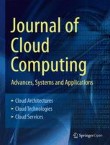Journal of Cloud Computing welcomes submissions to the thematic series on 'Edge-cloud computing cooperation for task offloading in internet-of-things’'.
With the fast development trend of Internet of Things (IoTs), the demand for User Terminals (UTs) such as smartphones, unmanned aerial vehicles, and wearable devices is increasing dramatically. However, UTs are constrained by limited resources, such as CPU computing power, storage space, energy capacities, environmental awareness and complex computing tasks. To solve the above contradictions, one effective way is to offload complex computing tasks from UTs either to remote cloud servers or nearby edge servers. Compared to cloud servers, edge servers are closer to UTs and thus achieve lower latency; however, edge servers have low computing capacity while cloud servers have relatively sufficient computing power. Therefore, edge computing and cloud computing can cooperate and complement with each other in terms of computing, storage, and communication facilities. The combination of edge and cloud computing will make task execution faster, cheaper, and more stable.
This thematic series is devoted to state-of-the-art research covering concepts of task offloading technologies for IoT applications. It is of great significance to the rapid promotion of collaboration between Mobile Cloud Computing (MCC) and Mobile Edge Computing (MEC). With the continuous development of theory and methods of decision-making and thorough perception of the hybrid task offloading, and further meets the application requirements on UTs, compensates for the lack of computing capacity and limited battery power for IoT systems.
Topics of interest include but are not limited to:
- Computing paradigm frontiers: edge, fog, mist and cloud computing cooperation
- Optimization algorithms for edge-cloud computing cooperation
- Delay and energy minimization for edge-cloud computing cooperation
- Novel techniques and future perspectives for edge-cloud computing cooperation
- Energy-efficient task offloading in edge-cloud computing environments
- 5G-enabled services for task offloading in edge-cloud computing environments
- Security and privacy issues for task offloading with hybrid clouds in IoTs
- Model and architecture design for computation offloading, resource management and task scheduling in IoTs
- Computation and communication integration for task offloading in IoTs
- High-performance low-cost communication task offloading in IoTs
- Sustainable and green computing for task offloading in IoTs
- Deep learning-driven algorithms for task offloading in IoTs
Deadline for submissions: January 8 2021
Lead guest editor:
Huaming Wu, Tianjin University, China
Guest editors:
Adel Nadjaran Toosi, Monash University, Australia
Sukhpal Singh Gill, Queen Mary University of London, UK
Minxian Xu, Shenzhen Institutes of Advanced Technology, CAS, China
Submission instructions
Before submitting your manuscript, please ensure you have carefully read the submission guidelines for Journal of Cloud Computing. The complete manuscript should be submitted through the Journal of Cloud Computing submission system. To ensure that you submit to the correct thematic series please select the appropriate special issue in the drop-down menu upon submission. All submissions will undergo rigorous peer review and accepted articles will be published within the journal as a collection.
Submissions will also benefit from the usual advantages of open access publication:
- Rapid publication: Online submission, electronic peer review and production make the process of publishing your article simple and efficient
- High visibility and international readership in your field: Open access publication ensures high visibility and maximum exposure for your work - anyone with online access can read your article
- No space constraints: Publishing online means unlimited space for figures, extensive data and video footage
- Authors retain copyright, licensing the article under a Creative Commons license: articles can be freely redistributed and reused as long as the article is correctly attributed.
